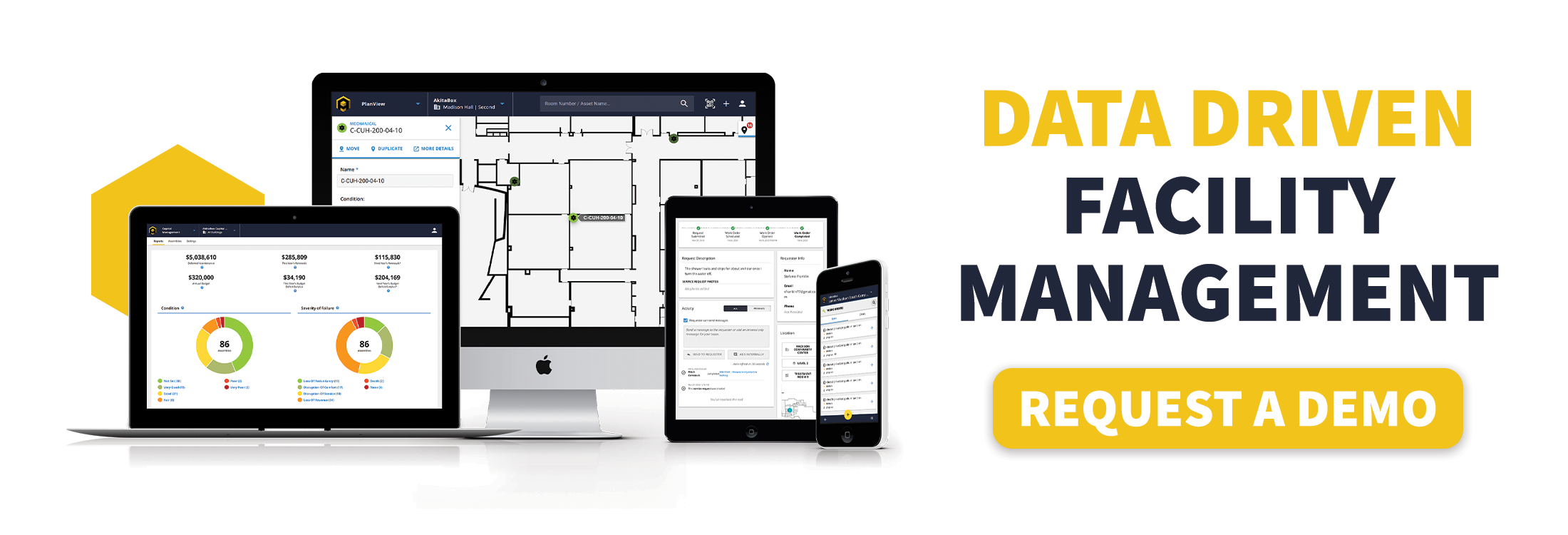For many building teams, an internal facility management software (sometimes also referred to as “homegrown” software) has become the core solution they rely on for their daily operations. But what is your internal facility management software actually helping your team accomplish, and more importantly – is it doing enough?
What Does an Internal Facility Software System Look Like?
An internal facility management system is a proprietary set of processes or a full-blown software that an organization creates in-house to manage their data (as opposed to using software designed by an outside software company).
In the era when internal systems were being developed, organizations could build out their information in a Database Management System. Information would be stored in spreadsheets and fed into graphical user interfaces that allowed teams to store and manipulate data. At the time, this very well could have been the most effective option.
In comparison to current offerings, these systems can fall short. Many solutions were designed by IT departments, as they had the resources and knowledge on how to create it. However, building teams have found that these solutions became too focused on IT processes and procedures, and often times that didn’t translate well to facility operations.
Another major pitfall for an internal system is scalability. If one person builds an entire system, it’s up to them to ensure it stays updated, up and running — there are no support teams or trainers. When that employee leaves the organization or retires, the only way to maintain that software is to either contract hire that individual to fix issues, or train an incoming employee to use that system. That’s a major time and money investment (and all of that is on top of the original cost incurred when the system was built in the first place).
This limits the potential for facility teams to grow or optimize their original investment. High upfront costs to upgrade and maintain systems leaves little room for improvements or additions in the software and can even prevent bugs and from being fixed in a timely manner. It’s important for teams to regularly evaluate their system and see if it could be improved or supplemented with a modern software. On top of all of this, original goals, or even new goals, for facility teams can often get lost in translation when a bulky facility software is bogging them down.
Reviewing YOUR Internal Facility Management Software
Internal systems aren’t bad by definition. There are plenty of organizations that have built out systems that fit their needs very well. Still, even if you’re satisfied with your solution, it’s always good to check up on how your team’s needs have evolved and make sure the data your system collects is still organized.
Organization (or lack thereof) is not a black and white issue. The chart below outlines the range of data organization a team may have. The spectrum ranges from paper-based systems all the way to cloud storage solutions. An average internal system exists somewhere in the middle.
Looking to share? Click here for a downloadable version.
After finding where your system lands on each scale, you should have a composite score that paints a portrait of your system’s overall effectiveness. The closer your score is to 20, the more efficient your processes.
REPLACING VS. SUPPLEMENTING YOUR Facility Management Software
This isn’t a call to ditch your current system. In fact, there are facility management solutions that actually can work to enhance what you currently use for the short term and help you ease into a replacement in the long term if you find the right fit.
An existing internal system works well in conjunction with a newer cloud-based software offering because it is specifically tailored to your needs. It means you know exactly what to look for in a partner software. Furthermore, if your system has been collecting data, you have a historical performance record to pull information from that can feed into your new system. This will help you get more mileage out of a software by providing a baseline pool of information to benchmark against. If your internal system collects the right information, you may have the potential to use that information to reduce upfront implementation and data collection costs (if you choose a service that provides data collection).
Look for software offerings that enhance your system by filling any gaps you’ve identified in the Data Organization Spectrum above. Don’t have a complete record of your facility data? Look for included data collection services. Are your assets not performing optimally? Find an offering that will aid in preventive maintenance scheduling. Satisfied with the data you have but wish you could access it faster? There are solutions out there with user-friendly interfaces designed to get you the information you need as quick as possible so you can spend less time searching and more time solving problems.
If you’re still on the fence about whether your facility software is truly doing the work you need it to, you can evaluate your solution against a modern solution such as AkitaBox and see how its features stack up against an alternative. If you find that it falls short, it might be time to supplement or replace.
A lot of hard work went into creating and maintaining your internal system–it only makes sense that you get the most out of it by filling in the gaps.
What’s your experience using your facility management system? Leave a comment below and tell us about it!


